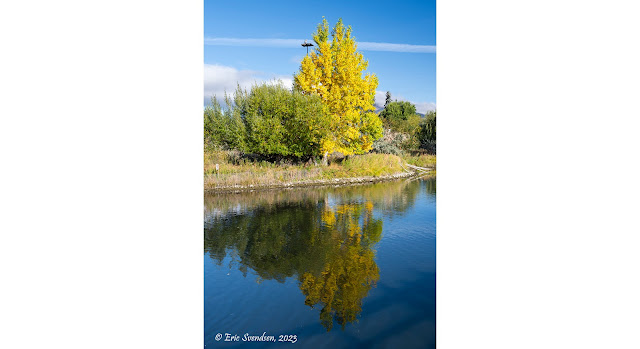The science behind fall colours.
 |
| Photographed at Rotary Marsh Park, Kelowna. |
Chlorophyll, the dominant photosynthetic pigment in most plants, is green in colour. It is green because it is the one colour of the visible light spectrum that the plant doesn't use; it reflects it. Chlorophyll is not the only pigment found in plants however; they also employ carotenoids (which includes xanthophylls) and anthocyanins. Carotenoids are yellow in colour while anthocyanins tend toward the red end of the spectrum. Although present in leaves, their colours are overwhelmed by the presence of chlorophyll.
The interesting thing about anthocyanins is that their colour is affected by pH. A good example of this is found in hydrangea flowers. Soil pH affects the colour of these flowers; low pH (acidic) produces blue flowers while higher values (more basic) produce purple flowers. Red leaves may vary in colour depending on the soil's pH.
Chlorophyll is easily broken down. The plant has to constantly produce the compound so that photosynthesis can occur. As temperatures get cooler, the plant's ability to produce it decreases. This allows the other pigments to be shown. Different plants have various amounts of carotenoids and anthocyanins present, and the specific type of each compound has different colour attributes. As these pigments become more pronounced, the leaf changes colour.
Eventually, all the pigments break down which leaves the dead organic matter the colour it naturally shows - brown. However, the process is magical and a beautiful thing to behold. Enjoy the transition as it only lasts a little while.
Thanks for reading.
Eric Svendsen www.ericspix.com



Comments
Post a Comment